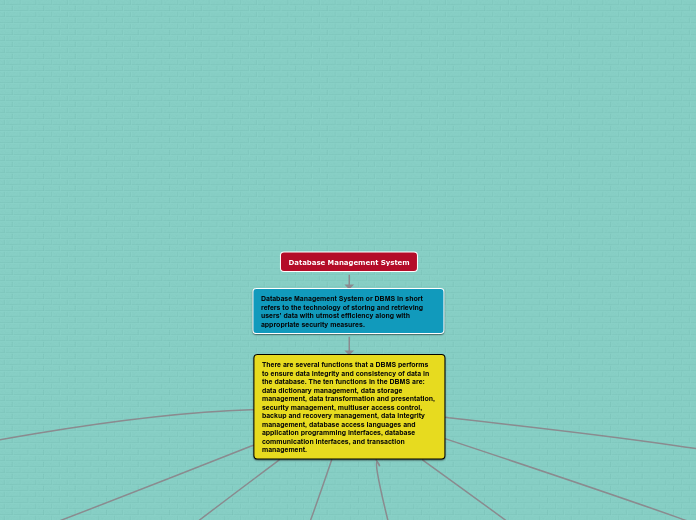
There are several functions that a DBMS performs to ensure data integrity and consistency of data in the database. The ten functions in the DBMS are: data dictionary management, data storage management, data transformation and presentation, security management, multiuser access control, backup and recovery management, data integrity management, database access languages and application programming interfaces, database communication interfaces, and transaction management.
1. Data Dictionary Management
Data Dictionary is where the DBMS stores definitions of the data elements and their relationships (metadata). The DBMS uses this function to look up the required data component structures and relationships.
2. Data Storage Management
This particular function is used for the storage of data and any related data entry forms or screen definitions, report definitions, data validation rules, procedural code, and structures that can handle video and picture formats
3. Data Transformation and Presentation
function exists to transform any data entered into required data structures. By using the data transformation and presentation function the DBMS can determine the difference between logical and physical data formats.
pic
4. Security Management
This is one of the most important functions in the DBMS. Security management sets rules that determine specific users that are allowed to access the database.
. Multiuser Access Control
Data integrity and data consistency are the basis of this function. Multiuser access control is a very useful tool in a DBMS, it enables multiple users to access the database simultaneously without affecting the integrity of the database.
6. Backup and Recovery Management Backup and recovery is brought to mind whenever there is potential outside threats to a database. For example if there is a power outage, recovery management is how long it takes to recover the database after the outage. Backup management refers to the data safety and integrity; for example backing up all your mp3 files on a disk.
7. Data Integrity Management
The DBMS enforces these rules to reduce things such as data redundancy, which is when data is stored in more than one place unnecessarily, and maximizing data consistency, making sure database is returning correct/same answer each time for same question asked.
8. Database Access Languages and Application Programming Interfaces
A query language is a nonprocedural language. An example of this is SQL (structured query language). SQL is the most common query language supported by the majority of DBMS vendors. The use of this language makes it easy for user to specify what they want done without the headache of explaining how to specifically do it.